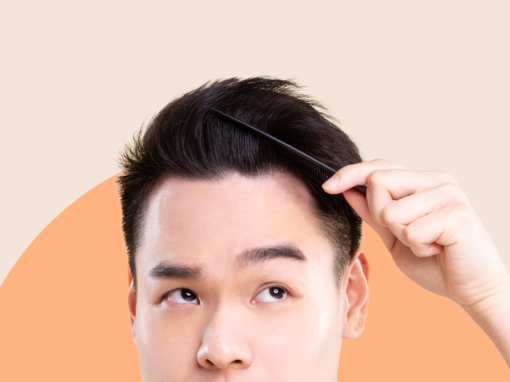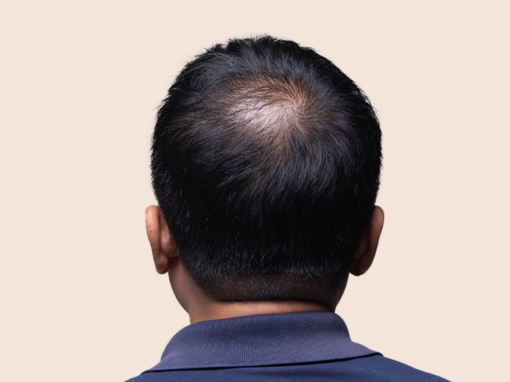Introduction
Hair loss doesn’t have to define you. Discover the game-changing hair loss treatment options to help you conquer male pattern baldness, restore confidence, and redefine your look. Dive into this article for a transformative journey into the world of hair restoration.
Overview
Male pattern baldness is a widespread and often distressing condition that affects men for various reasons. By estimates, men from around 35 years of age start to suffer from some form of baldness. Although baldness is typically associated with ageing, it can also impact younger men. Before discussing the various causes of male baldness, let’s understand its prevalence.
How Common Is Male Pattern Baldness?
As male baldness continues to affect a significant portion of the population, it’s essential to understand how widespread this condition is. A staggering 70% of men will experience some form of baldness during their lifetime. With such a high prevalence, exploring the contributing factors and effective treatment options is crucial to help those impacted regain their confidence.
What Causes Men To Go Bald?
There are numerous causes of men going bald. Some of which are:
Androgenetic Alopecia
Androgenetic alopecia, also identified as male pattern baldness, is the most common reason for hair baldness in men. This type of baldness is typically inherited and results in a receding hairline and bald spot on the head.
Hormonal Changes
Hormonal changes can also cause hair loss in men, particularly changes in testosterone levels. These fluctuations can result in baldness or thinning hair, especially in older men.
Medical Conditions
Certain medical conditions, such as alopecia areata, can cause bald spots on the head. Stress, medications, and infections can also contribute to hair loss.
Poor Nutrition
A diet lacking essential nutrients like iron and protein can lead to hair loss and baldness. Poor nutrition can also exacerbate other health issues that may cause hair loss.
Hair Loss Treatment Options
By considering the following hair loss treatment options, individuals with bald spots on their heads can find an effective solution that works for them, improving their confidence and self-esteem.
Topical Solutions
Topical solutions like minoxidil can be applied directly to the scalp to stimulate hair growth and prevent further hair loss.
Hair Transplant Surgery
Hair transplant surgery, a method for addressing male pattern baldness, entails the relocation of healthy hair follicles from one area of the scalp to another, effectively combating hair loss.
Scalp Micropigmentation
Scalp micropigmentation offers a non-invasive approach to hair restoration by employing tattooing techniques to simulate the appearance of a close-cropped hairstyle or denser hair. Through the insertion of pigments into the scalp, this method recreates the natural appearance of hair follicles, delivering a rapid and efficient remedy for baldness while avoiding the hazards linked to more intrusive procedures.
Hairpieces
Hairpieces, such as wigs or toupees, can cover up bald spots and provide a temporary solution for hair baldness.
Lifestyle Changes
Making lifestyle changes, such as adopting a healthy diet, managing stress levels, and quitting smoking, can help promote healthy hair growth and prevent male baldness.
Conclusion
The battle against male pattern baldness has entered a new era, and the power to revolutionize your life now lies in your hands. With groundbreaking hair loss treatments readily available, you can confidently confront hair loss, restore your crowning glory, and rejuvenate your self-image.
From topical solutions to advanced hair transplant surgeries, there’s never been a better time to explore the world of hair restoration and regain control over your appearance. So, take the first step towards a bolder, more vibrant you – it’s time to unleash your full potential and say goodbye to male pattern baldness once and for all!
FAQs
What are treatment options for men going bald?
Several treatment options are available for men experiencing hair loss and bald spots on their heads. Some effective hair loss treatments include topical solutions such as minoxidil, hair transplant surgery, scalp micropigmentation, hairpieces, and lifestyle changes like eating a healthy diet and managing stress levels.
Can you reverse male balding?
While male balding cannot be completely reversed, various hair loss treatments can help slow down or even stop hair loss. Topical solutions like minoxidil can be applied directly to the scalp to stimulate hair growth and prevent further hair loss. Hair transplant surgery can also be effective for those seeking a more permanent solution.
Additionally, lifestyle changes such as eating a healthy diet and managing stress levels can help promote healthy hair growth and prevent further hair loss. It’s essential to consult with a medical professional or hair specialist to determine the best hair loss treatment plan for your individual needs.
Can balding be cured
While balding cannot be entirely cured, several hair loss treatments can help slow down or even reverse hair loss. Applying topical solutions to the scalp can stimulate hair growth and prevent further loss. Hair transplant surgery can provide a long-lasting solution for baldness.
Additionally, lifestyle changes like eating a healthy diet and managing stress levels can help promote healthy hair growth and prevent further hair loss. It’s crucial to consult a medical professional or hair specialist to determine the best hair loss treatment plan for your needs.
Can men grow their hair back after going bald?
While it is not always possible to entirely regrow hair in a bald spot, there are treatments available that can help stimulate hair growth and improve the appearance of a bald patch. Topical solutions such as minoxidil can promote hair growth and prevent further loss.
This article is for informational purposes only and does not constitute medical advice. The information contained herein is not a substitute for and should never be relied upon for professional medical advice. Book a consultation with andSons medical team to learn more about healthcare treatments here.


